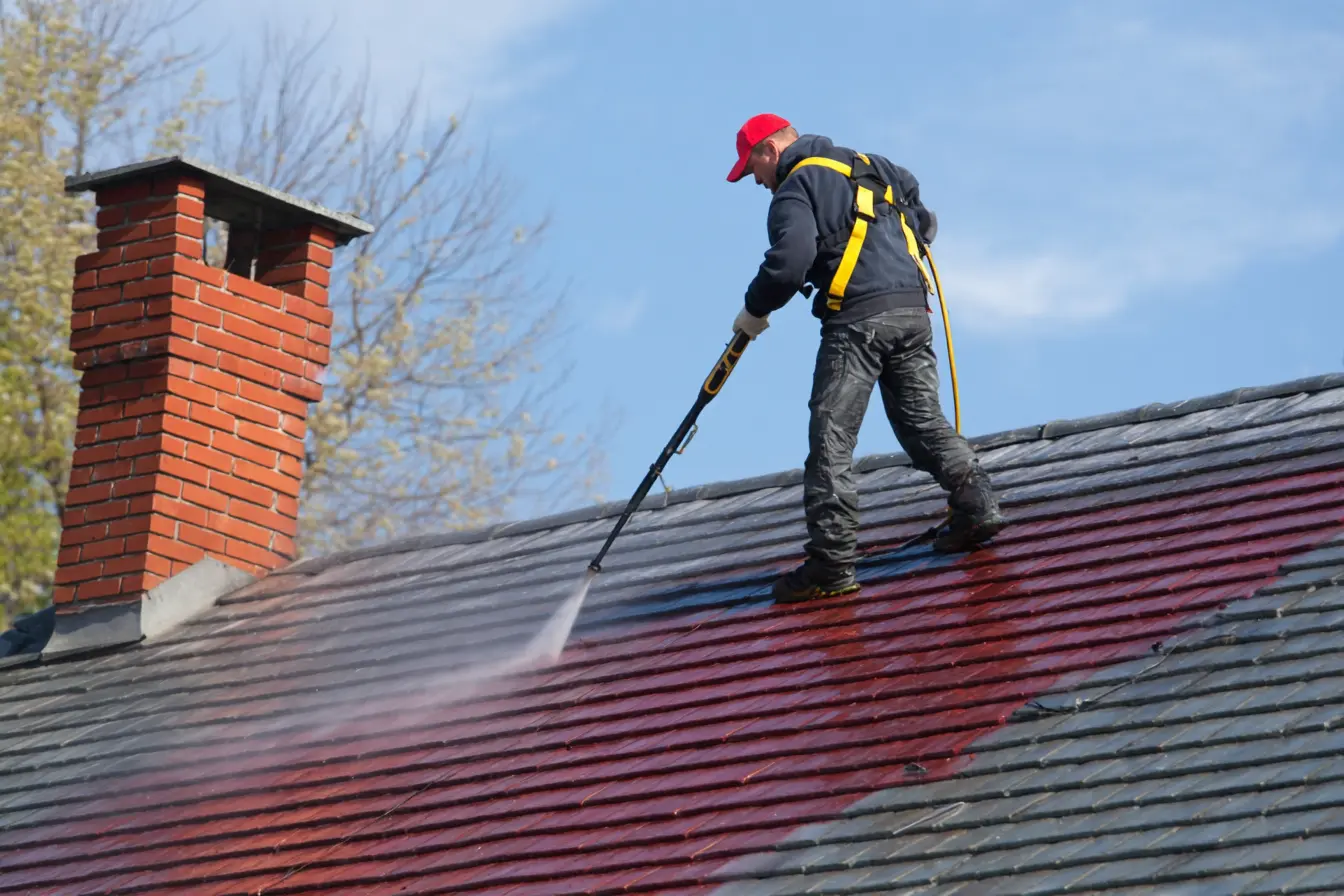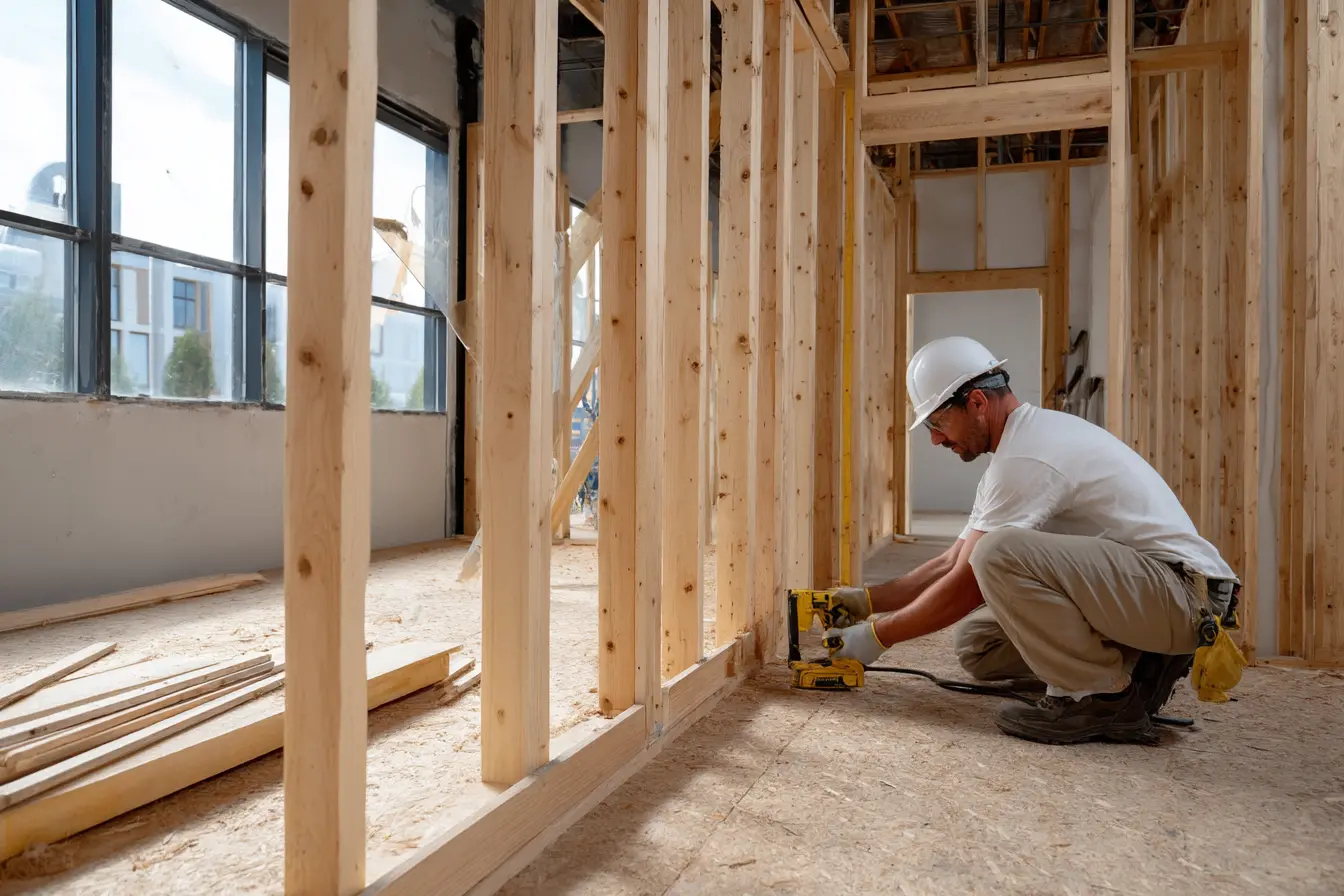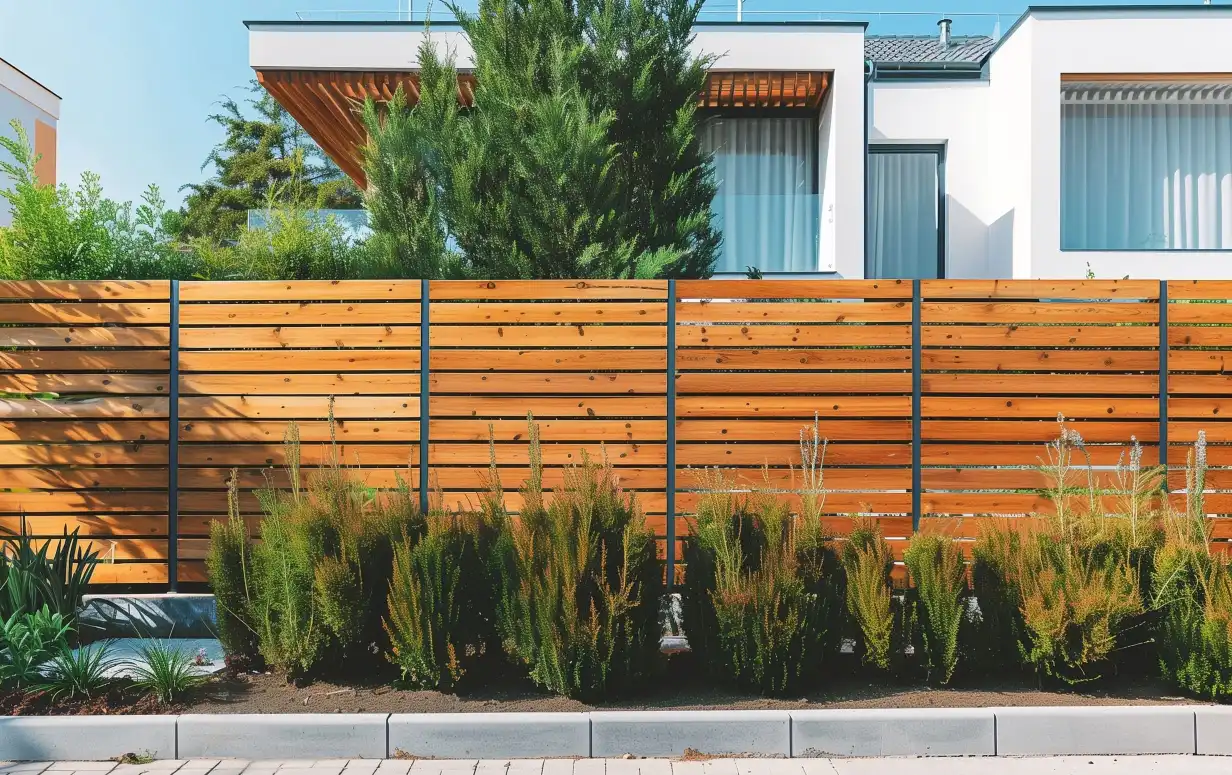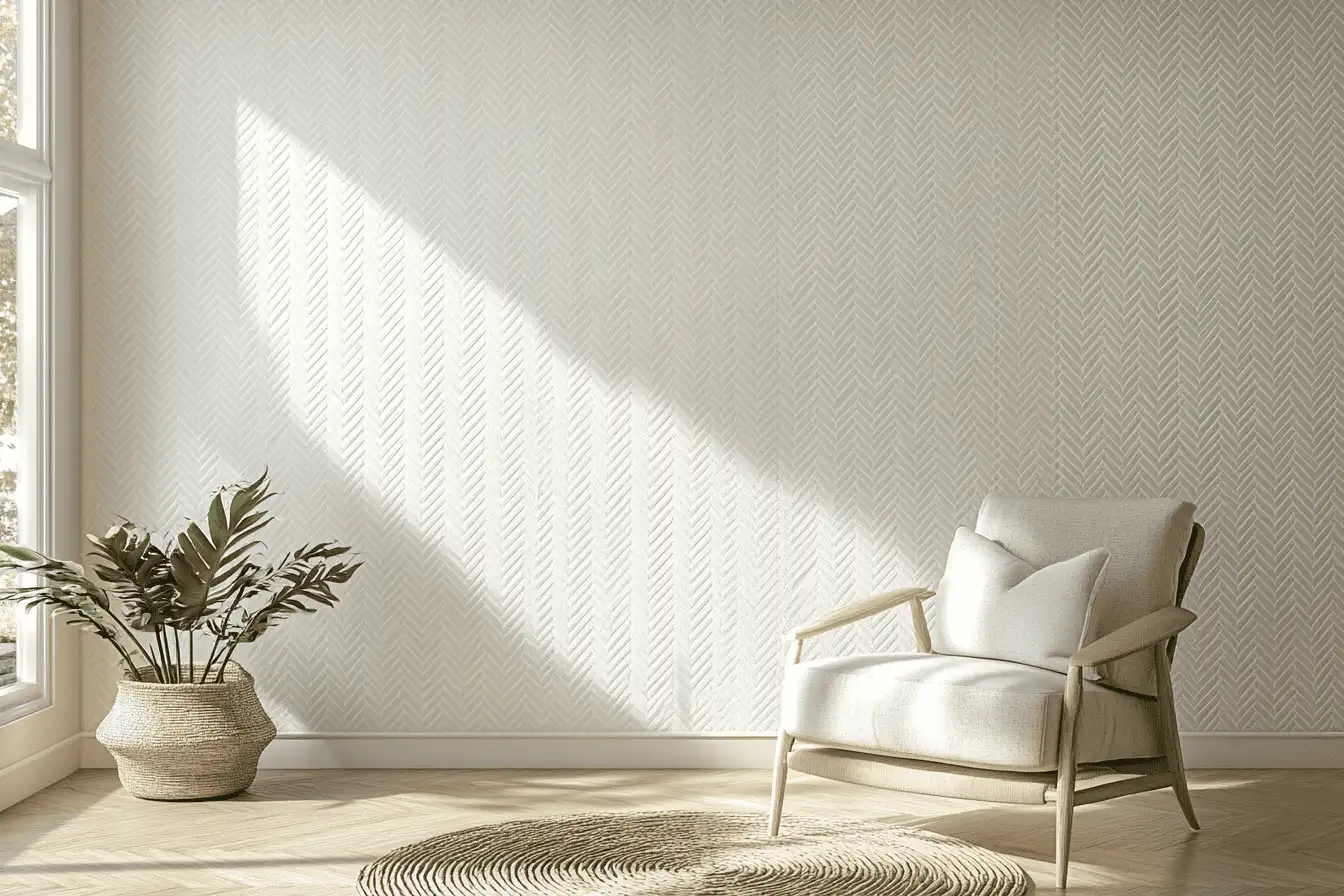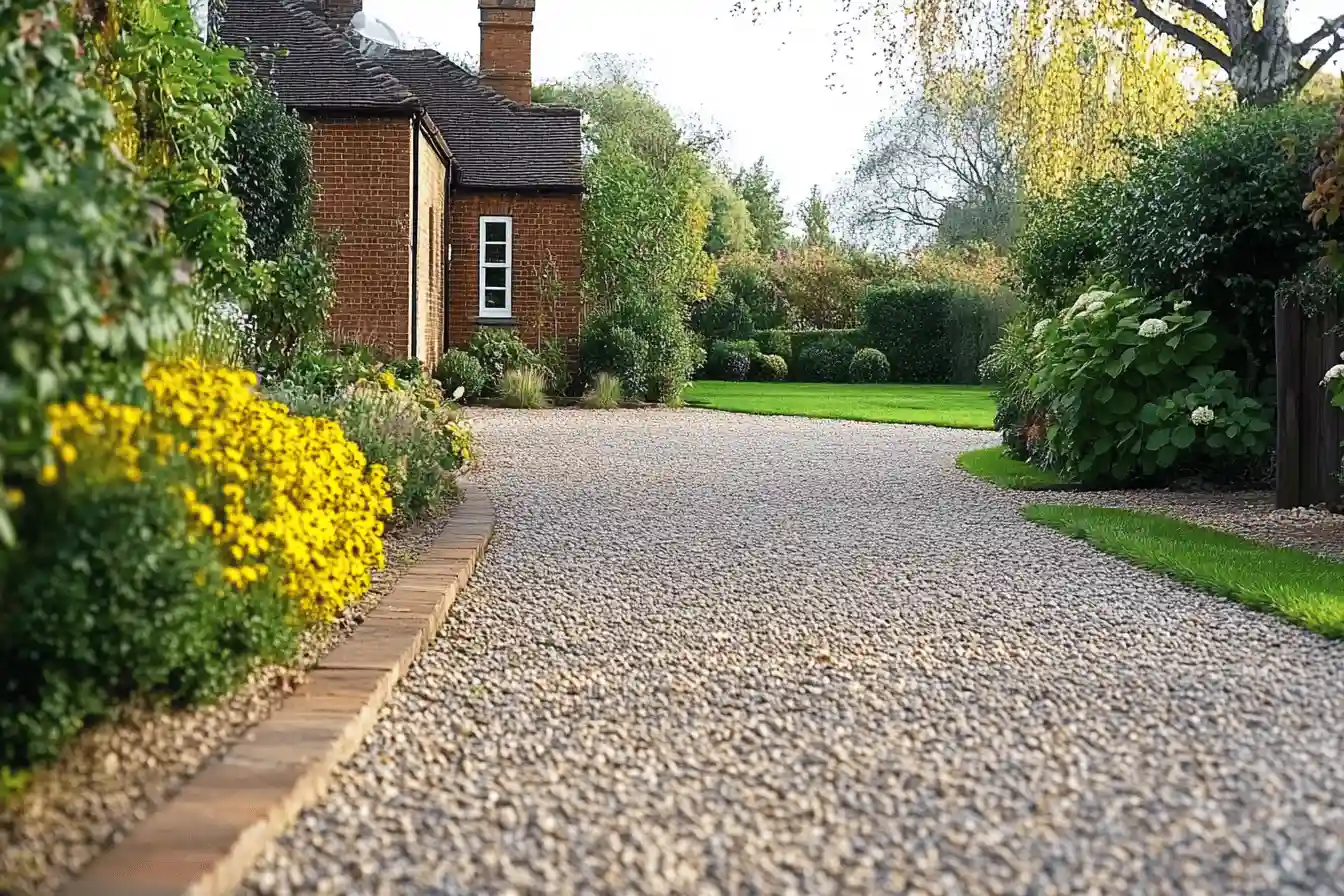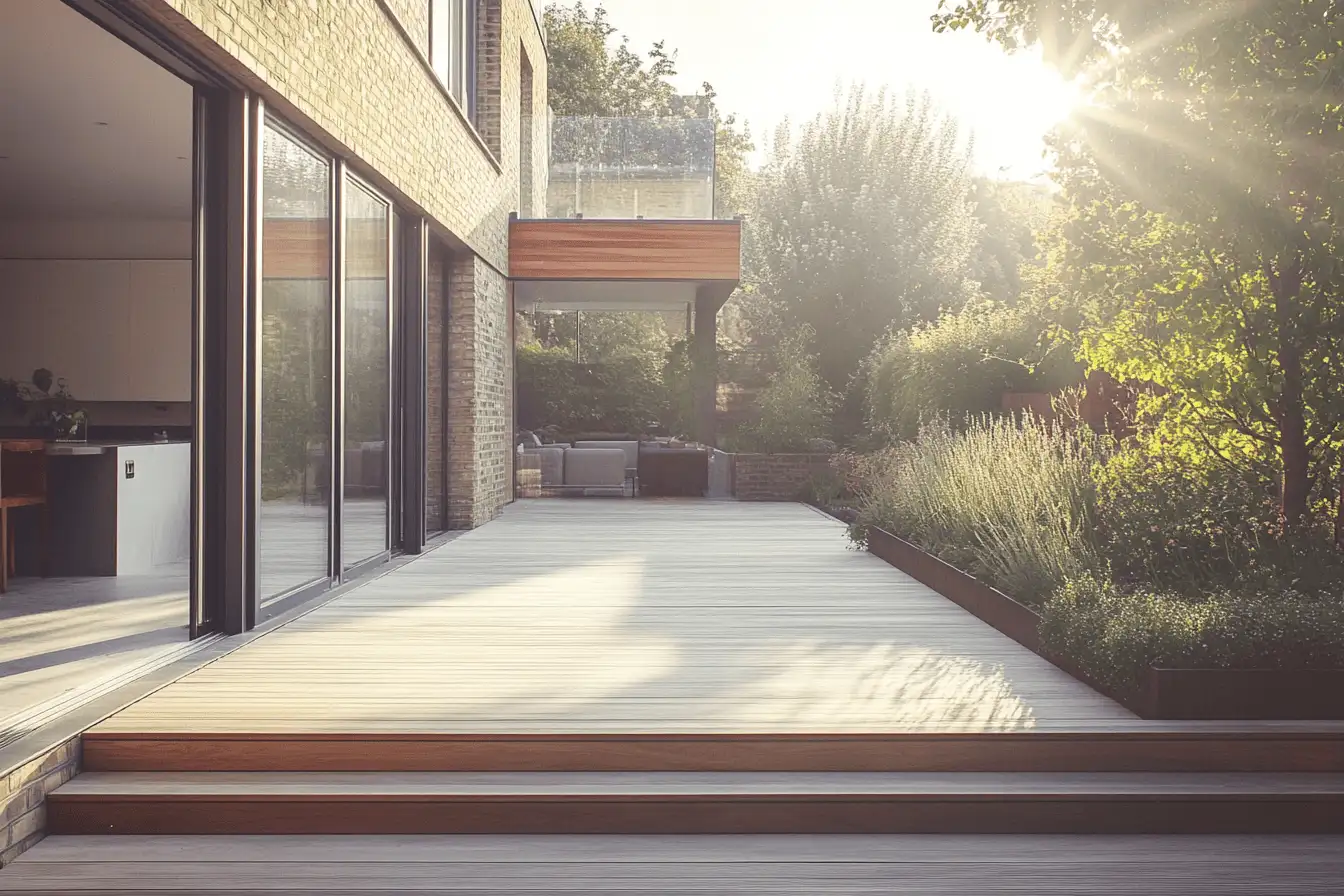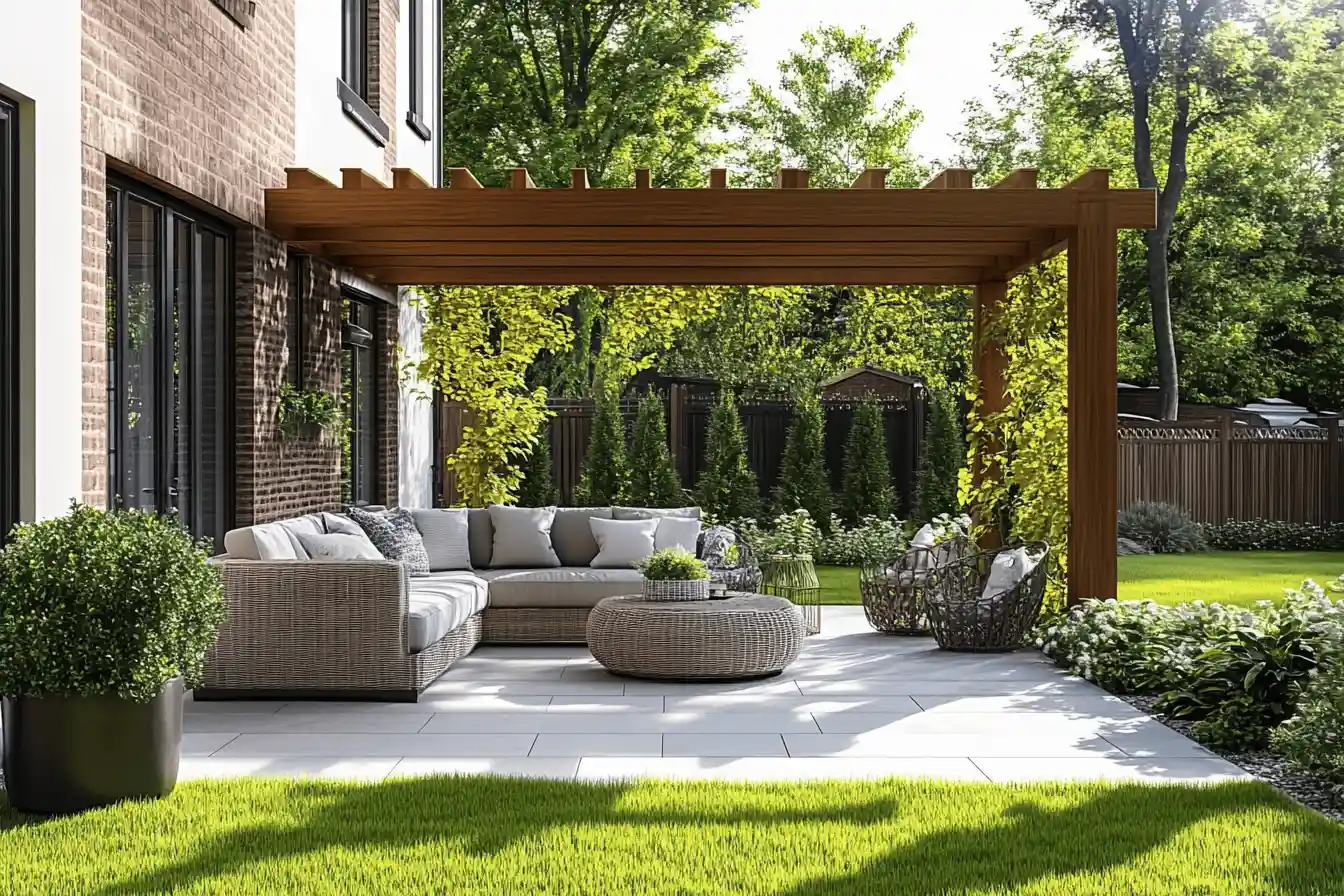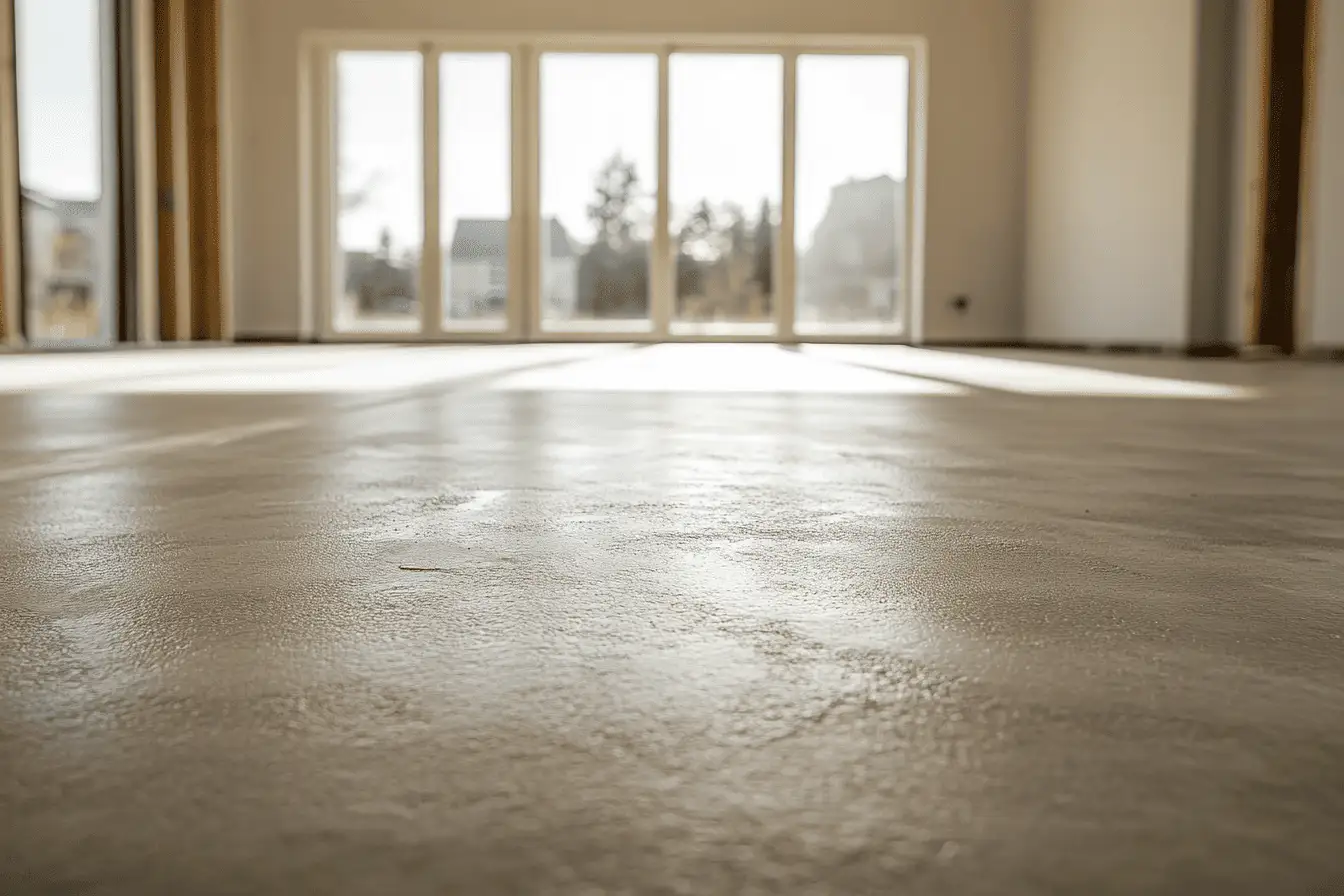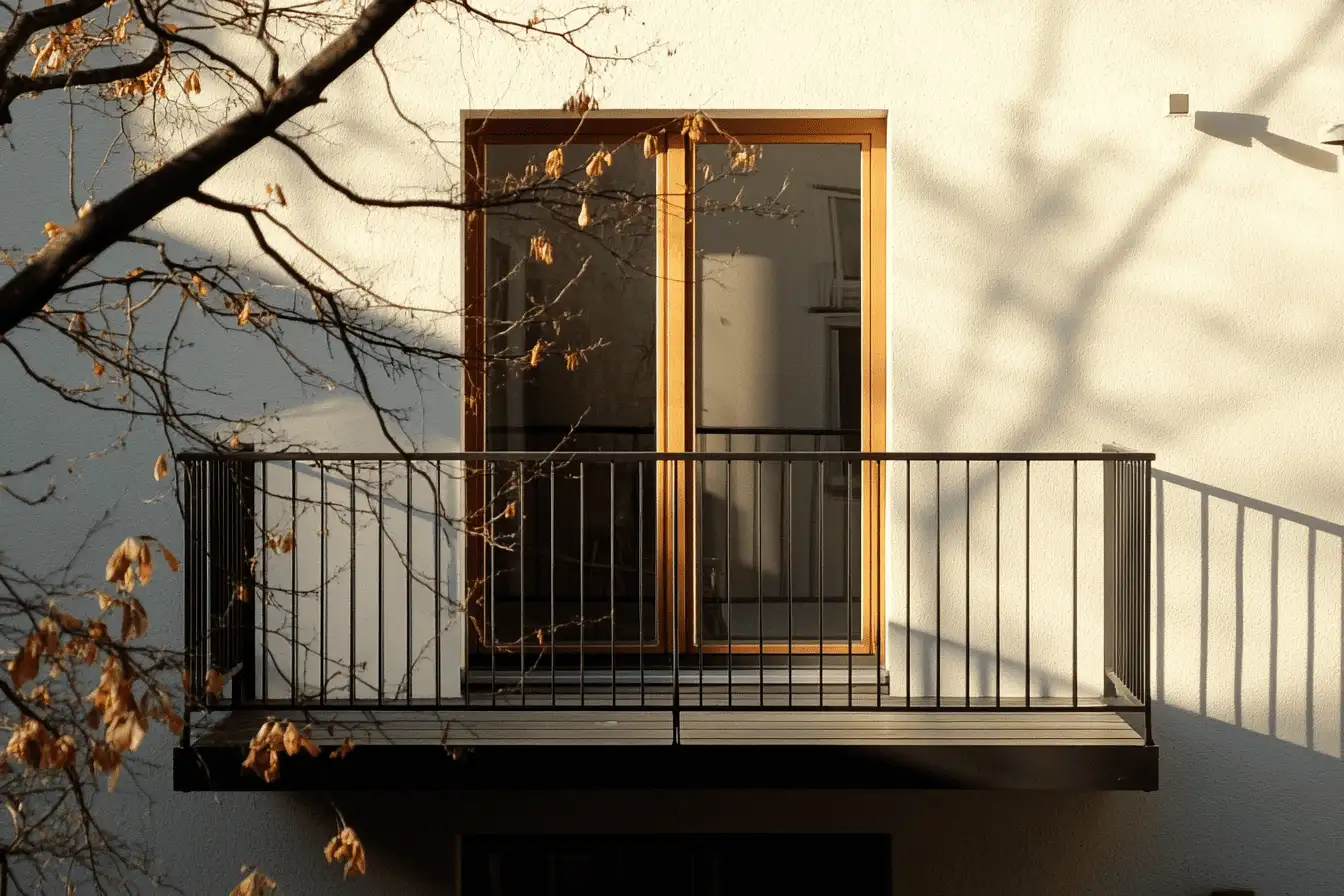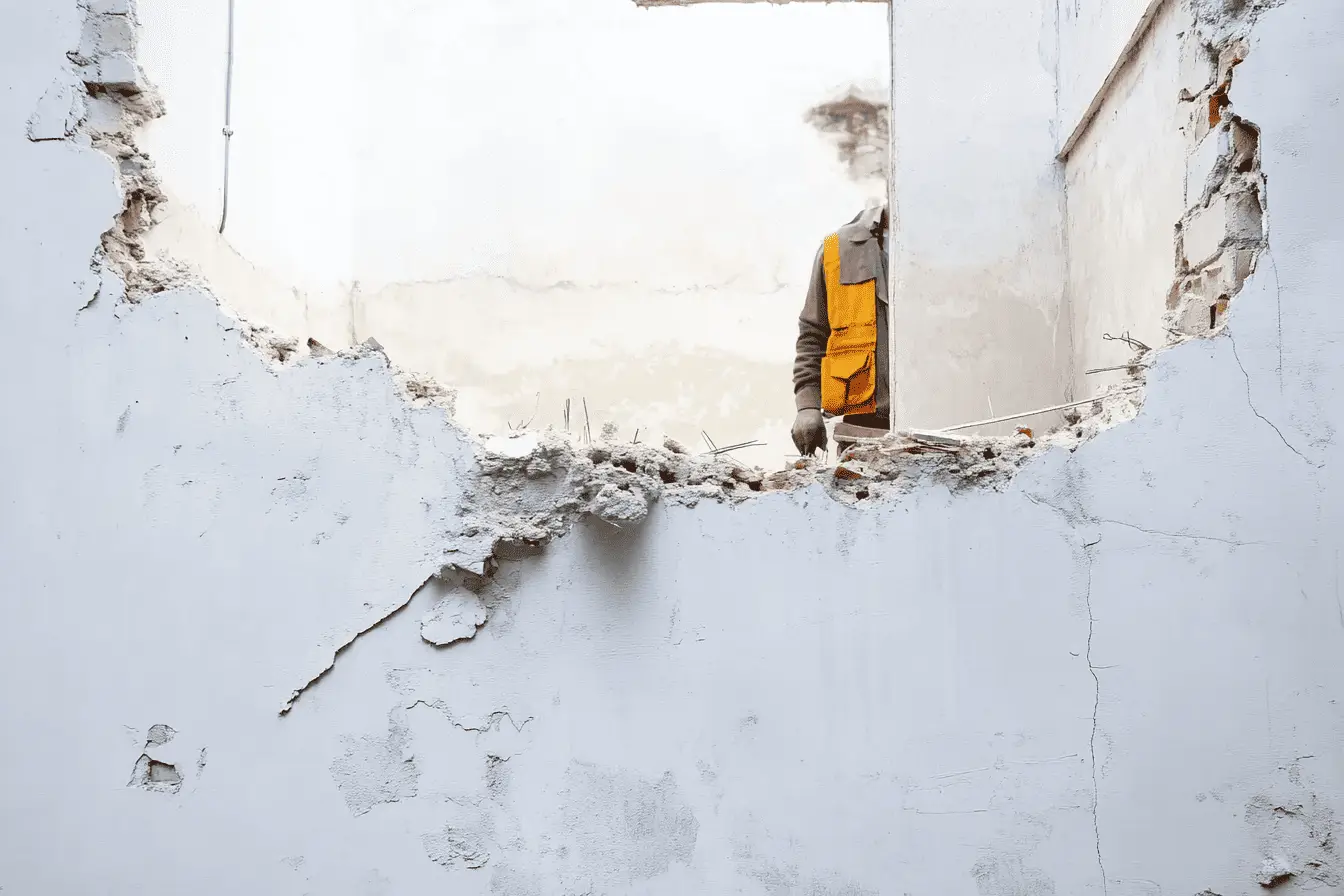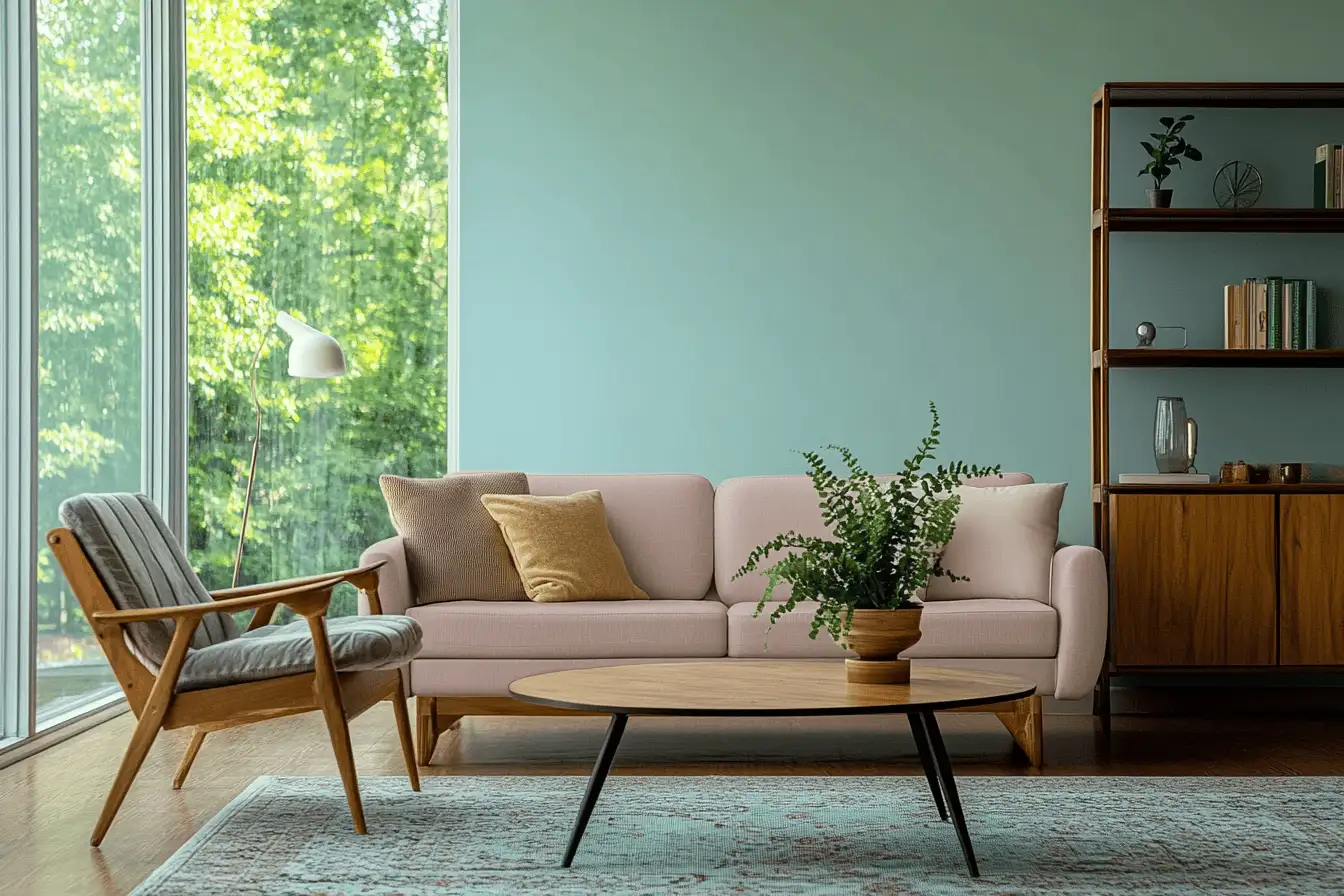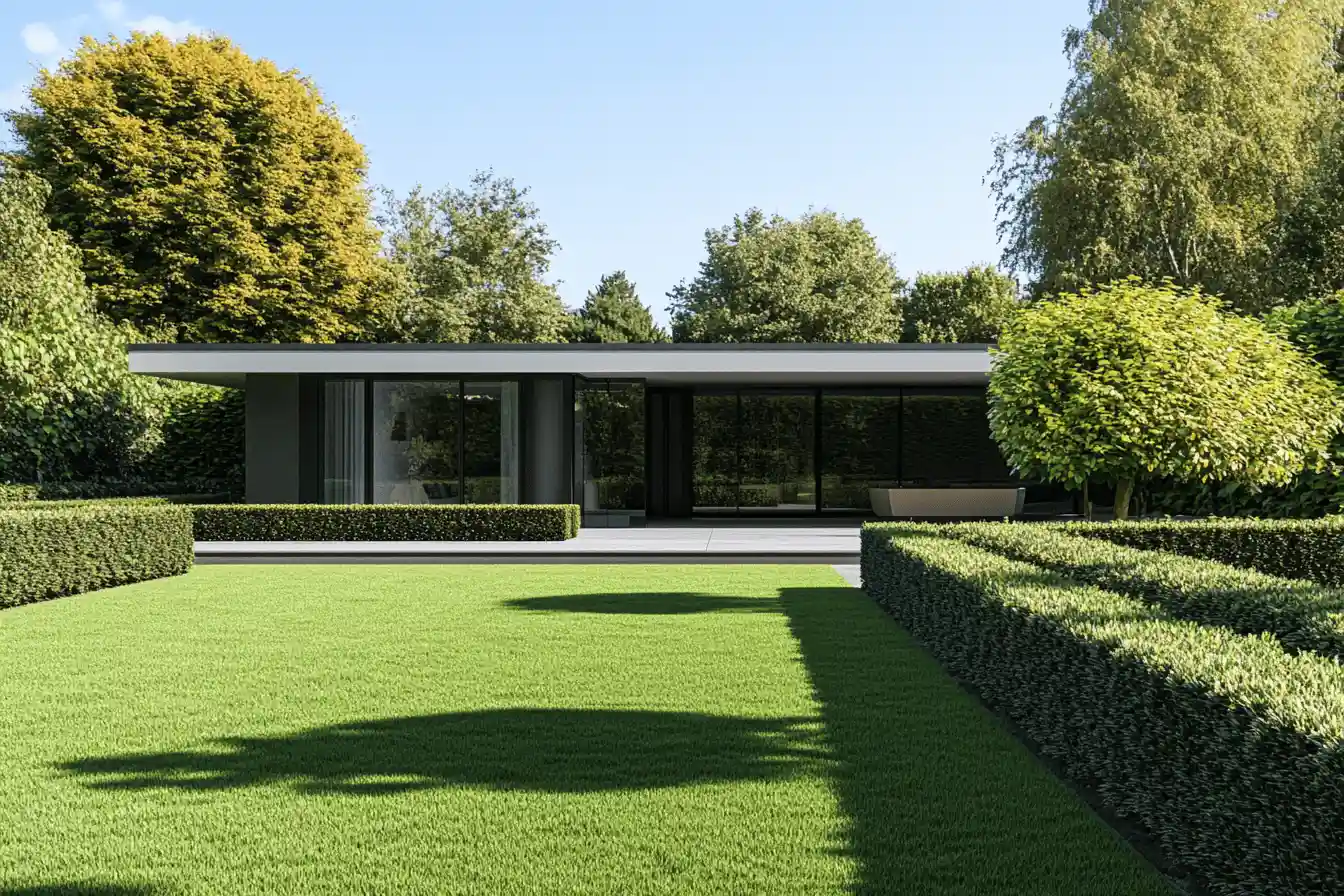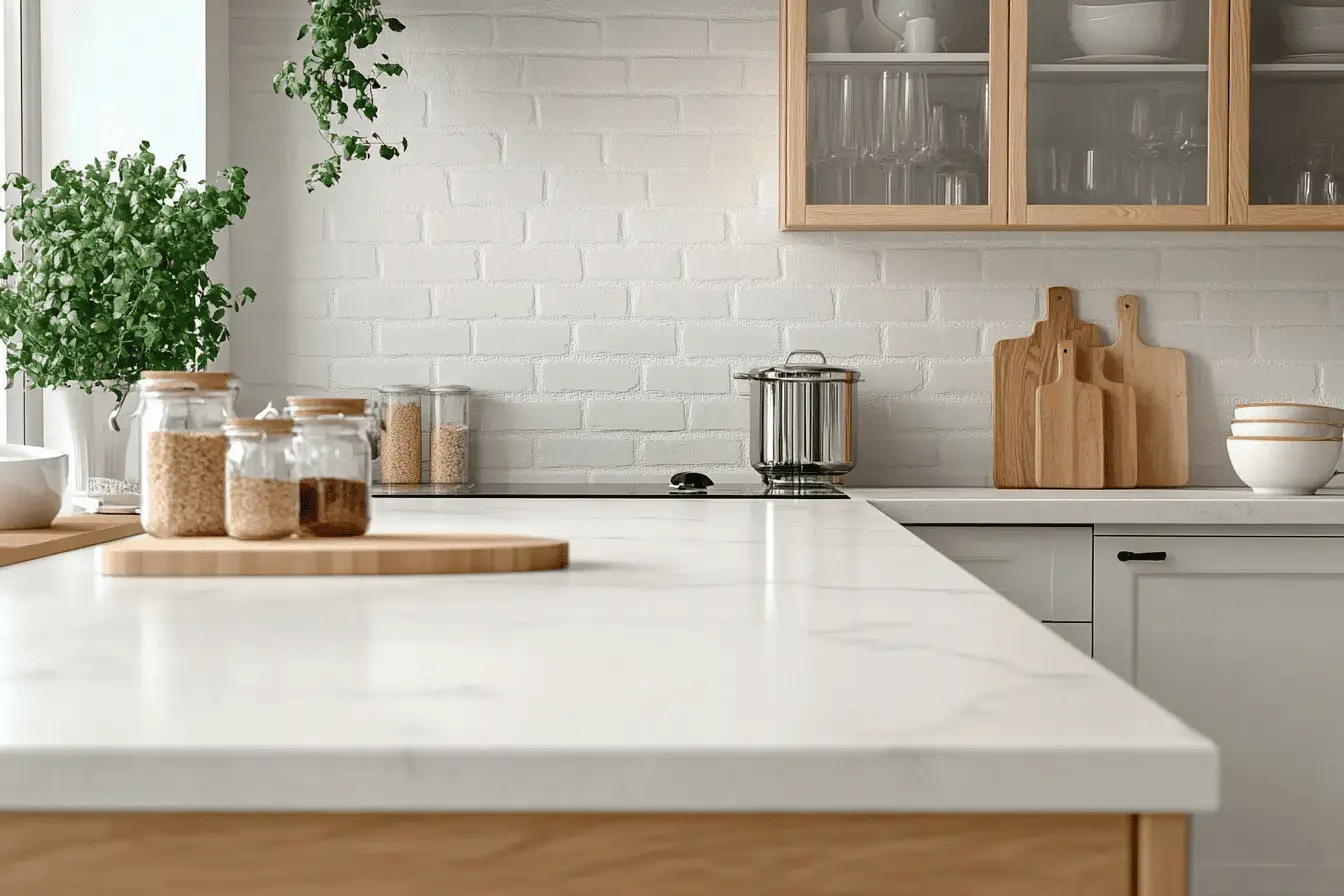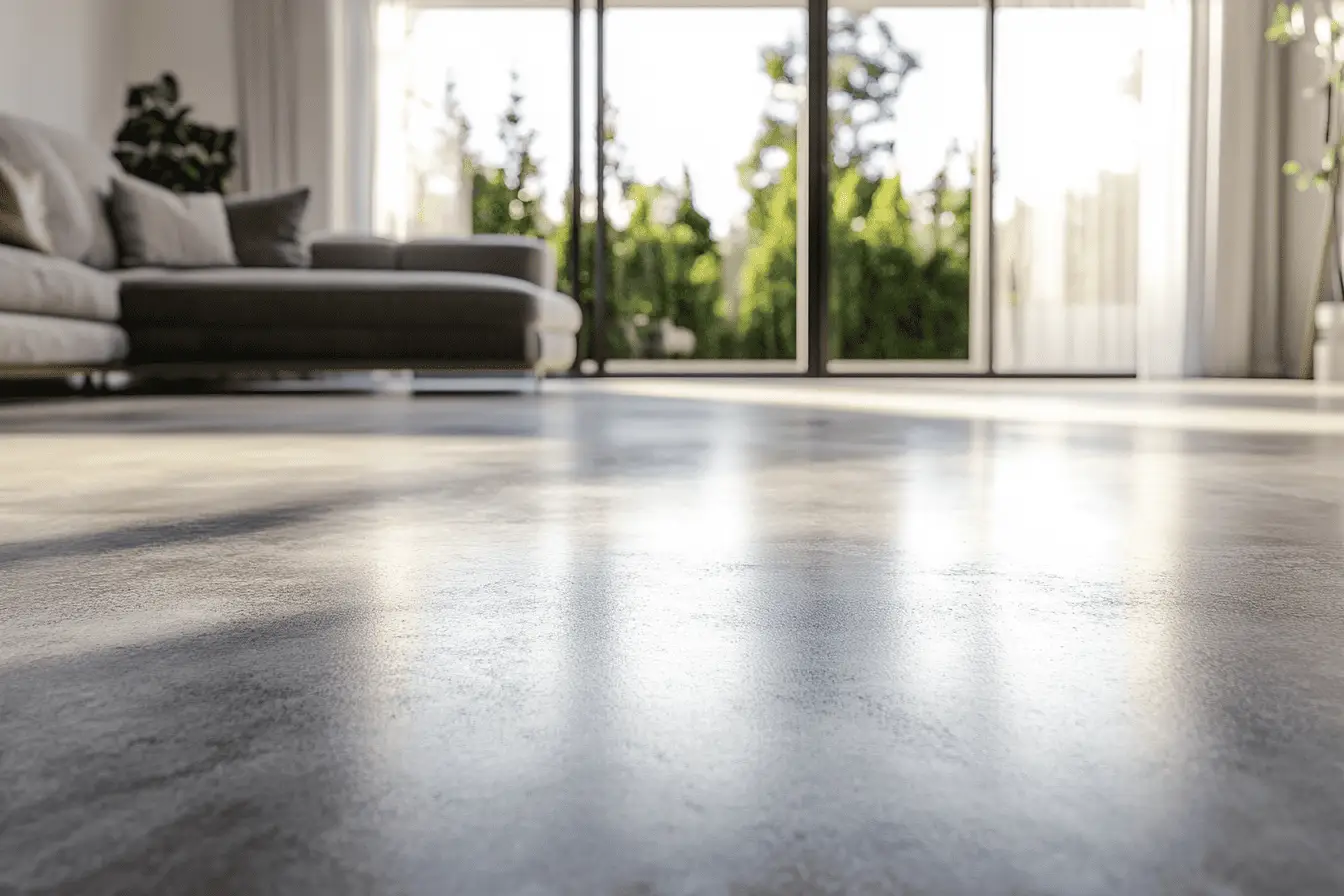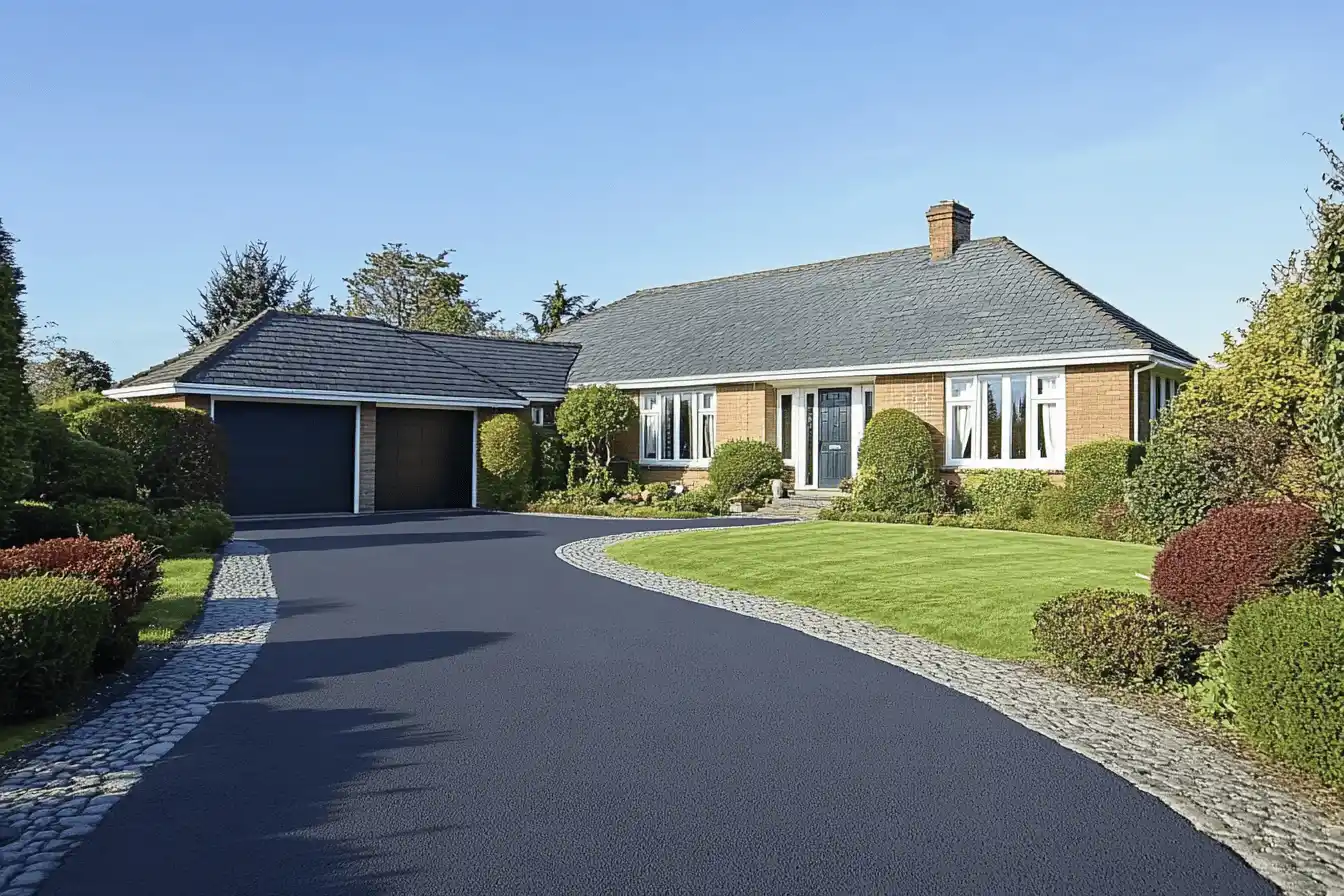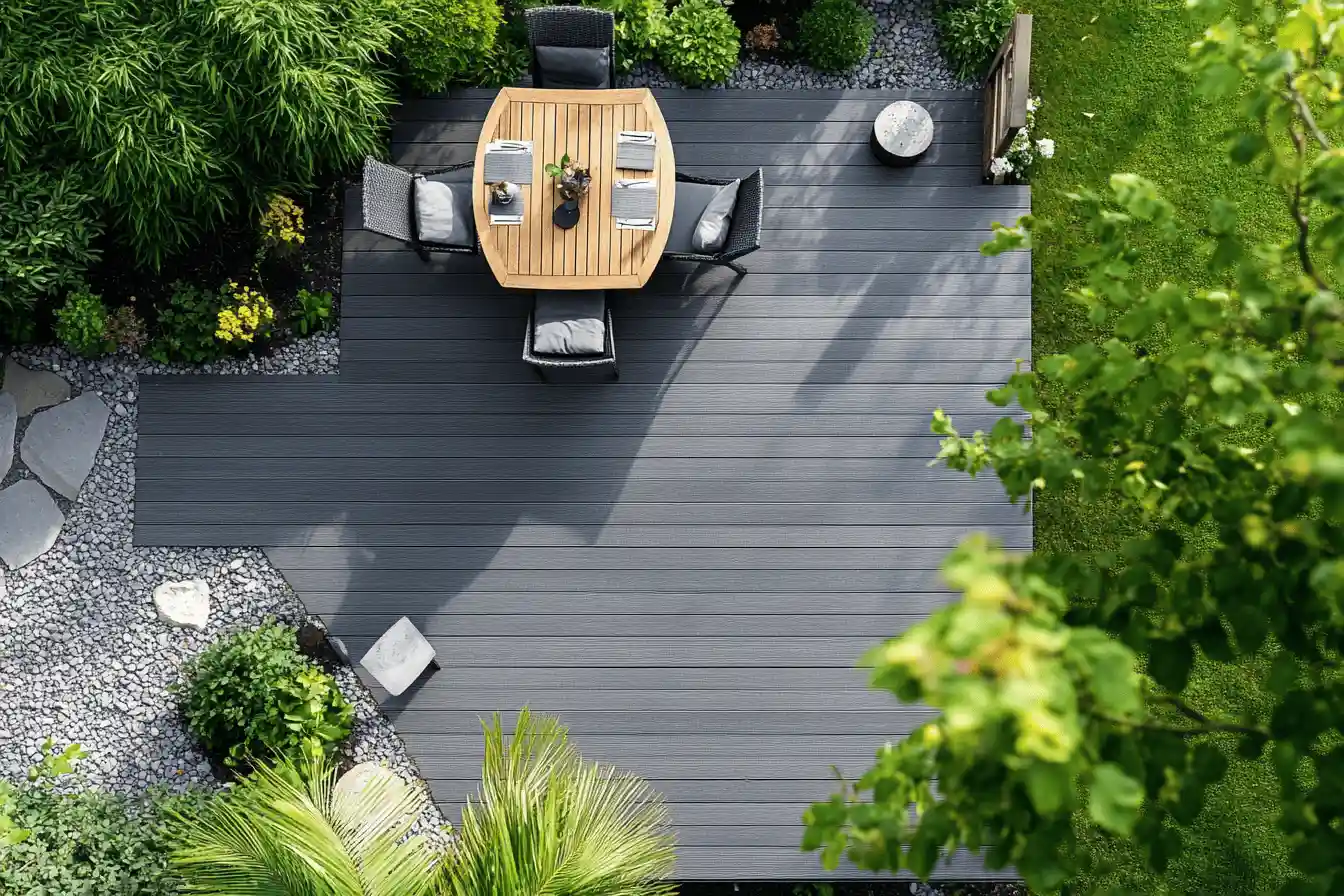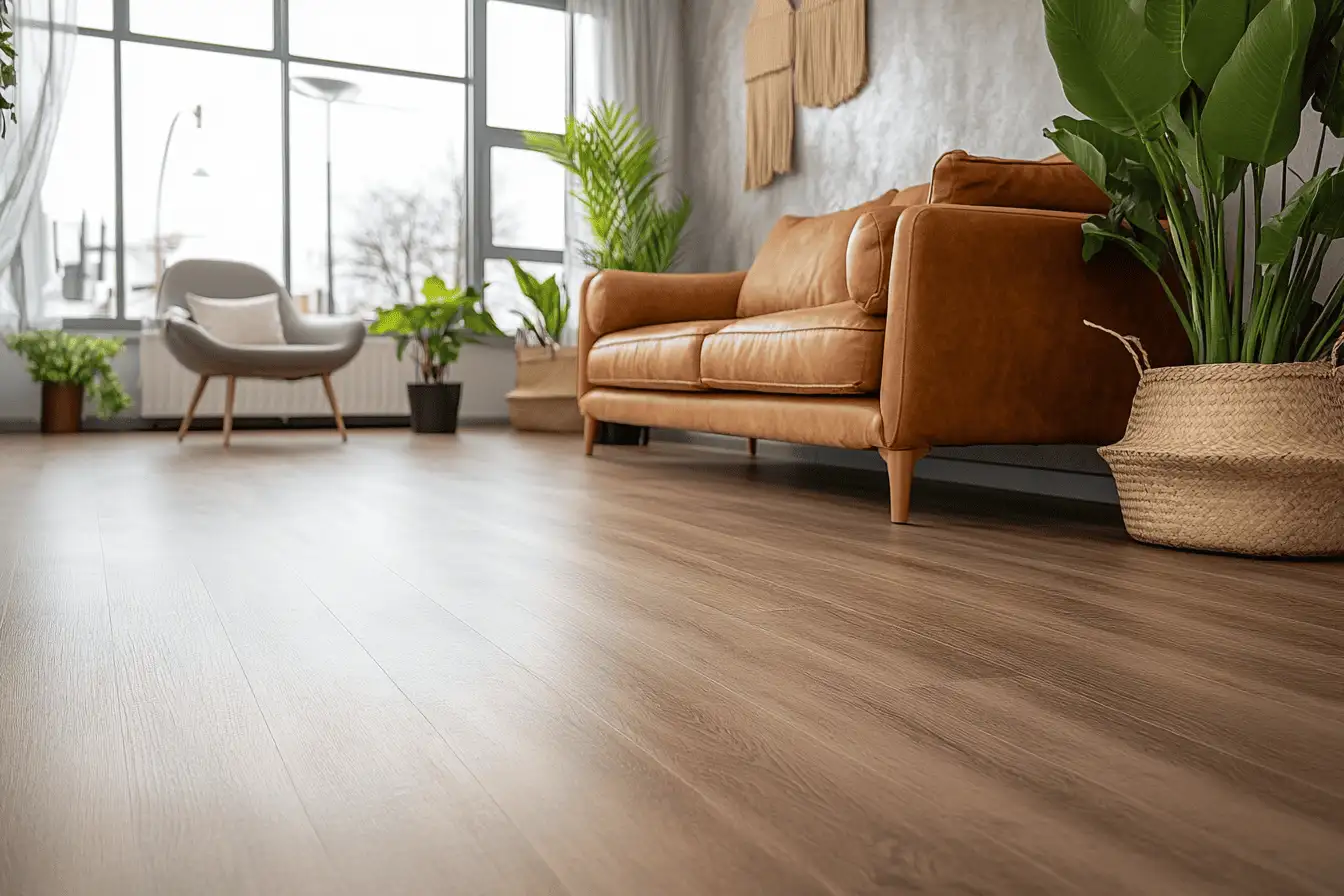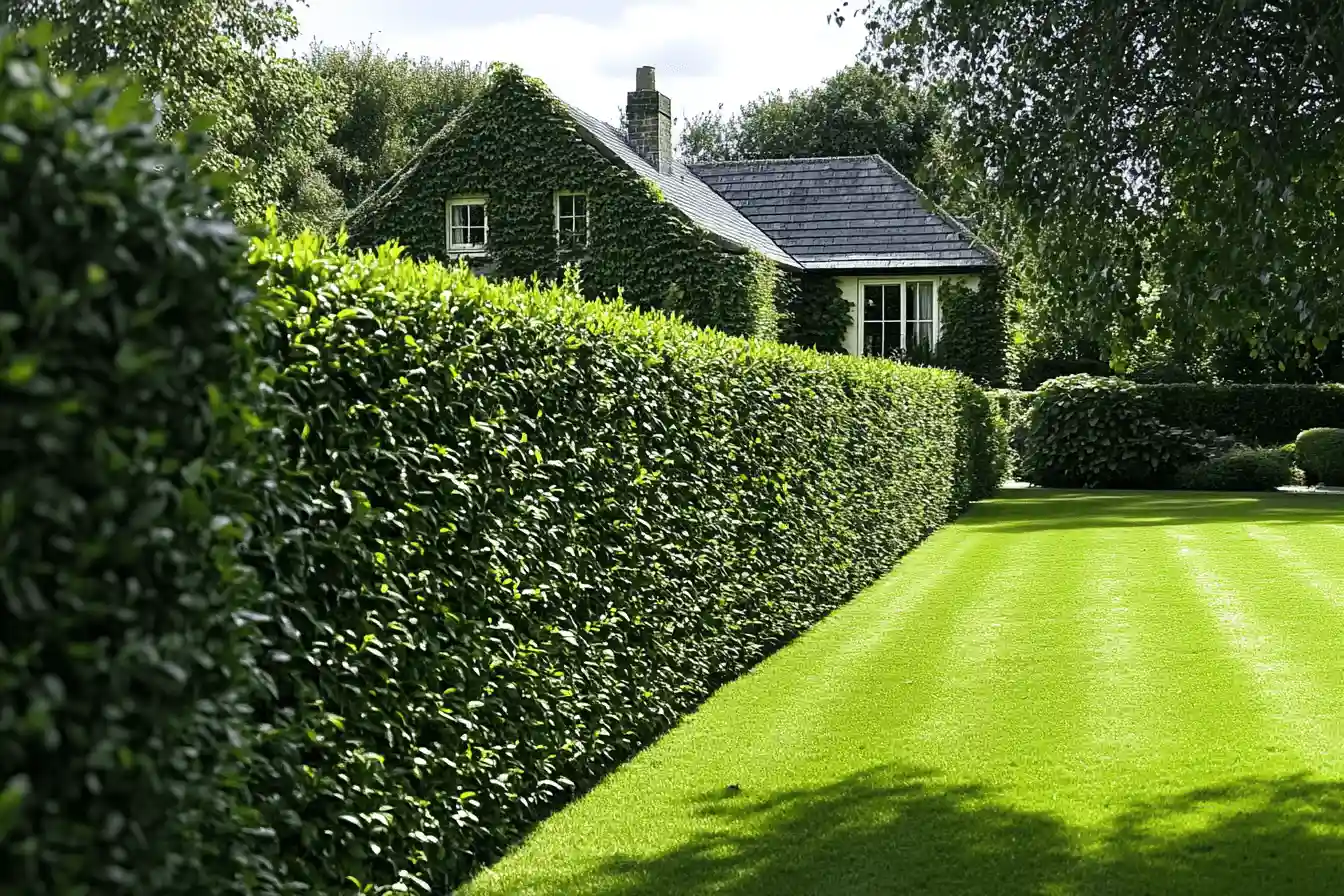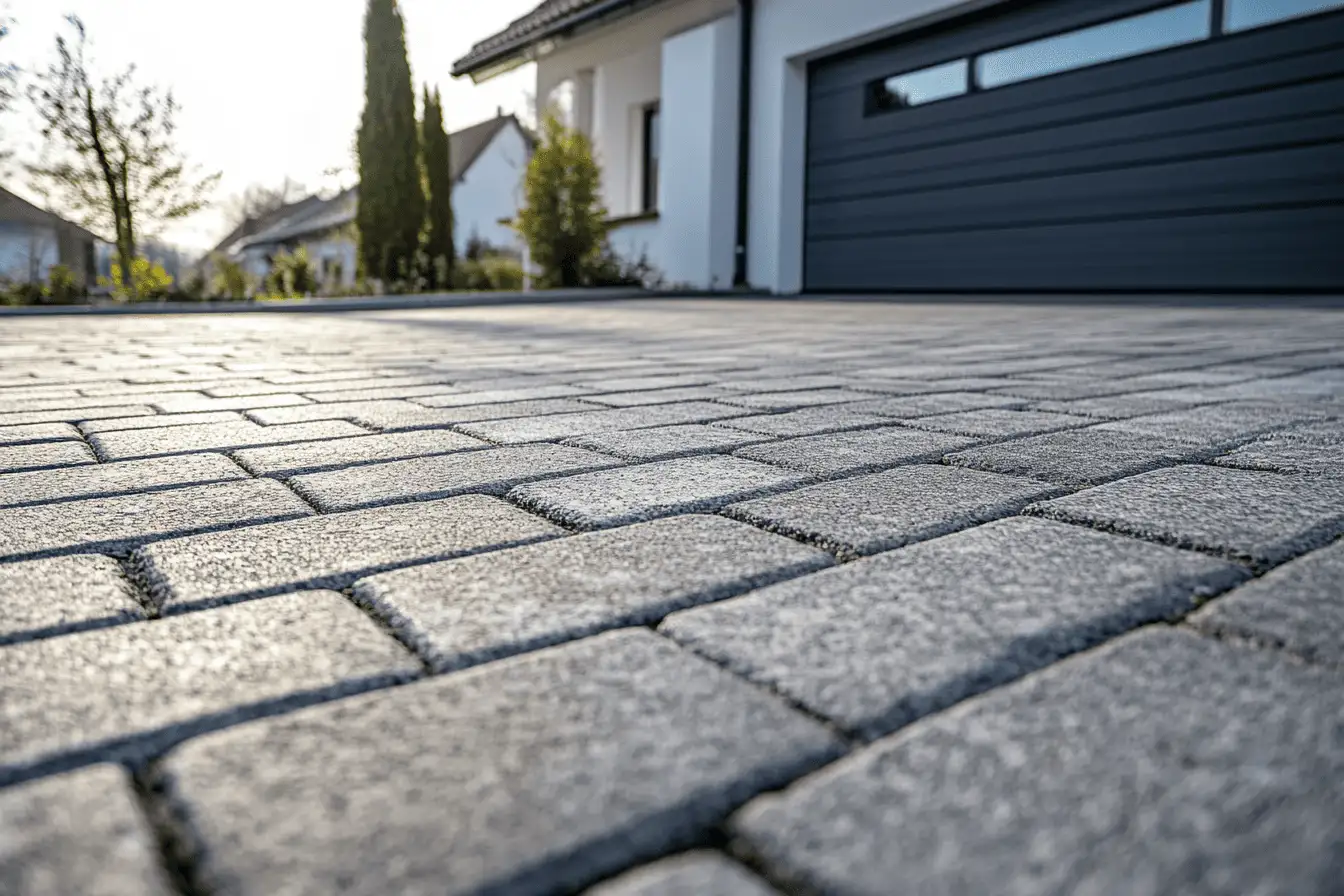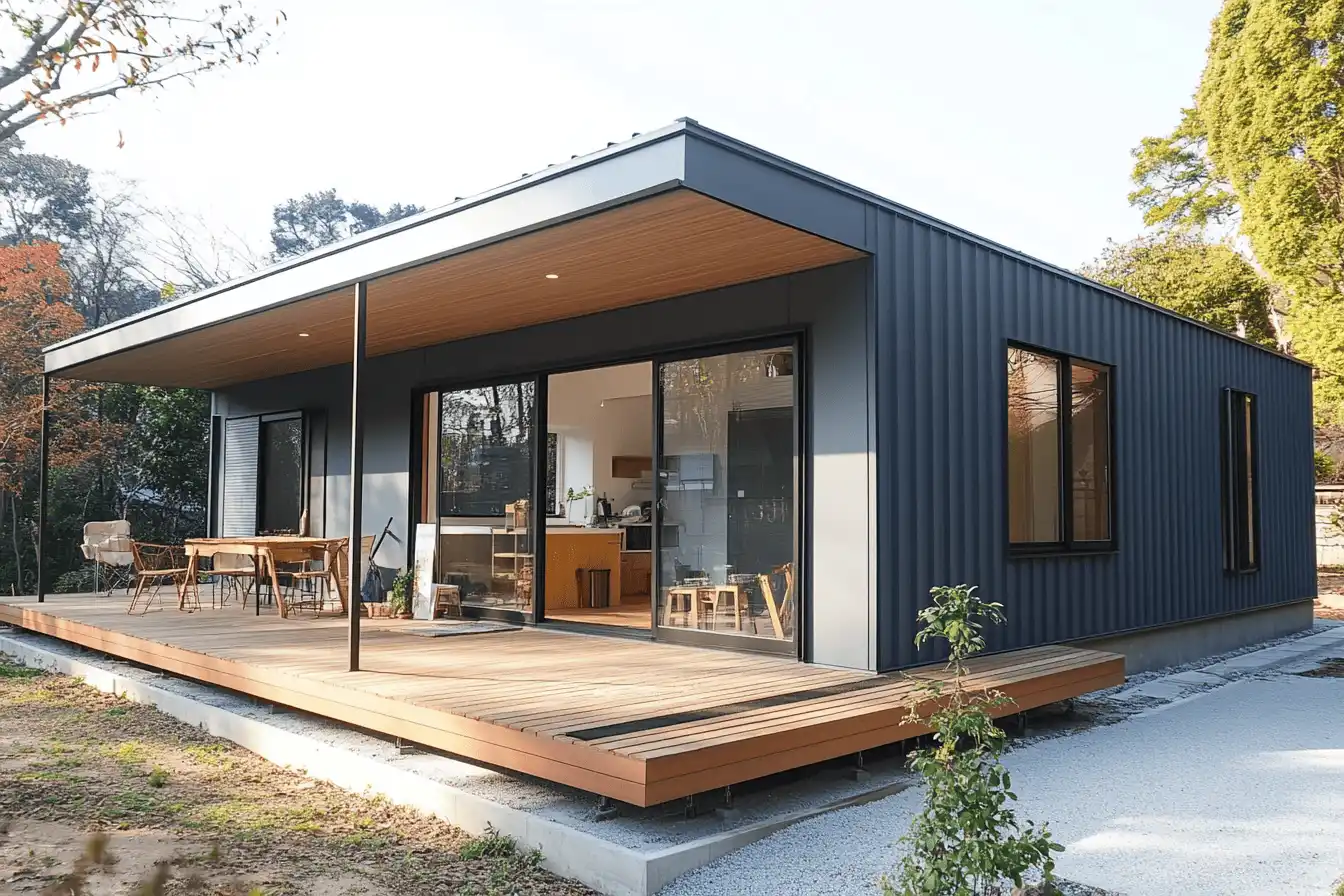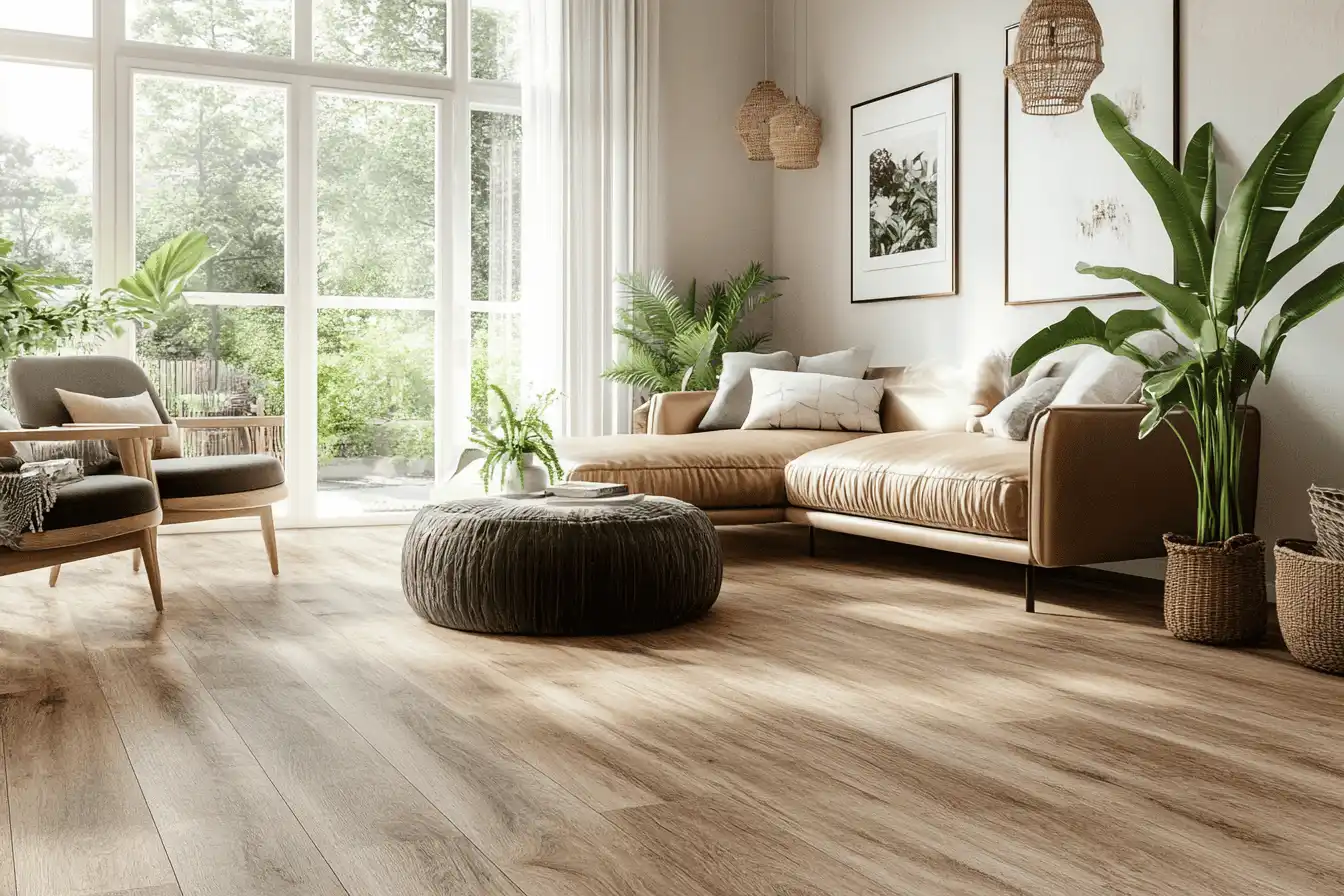
Laminate flooring is one of the most commonly installed floor coverings in the UK due to its relatively low price and favourable material properties. Laminate flooring is hard-wearing and particularly easy to maintain. We show you what laminate flooring cost per m2 you can expect in the UK. Plus: Get free quotes!
What does laminate flooring cost per sqm in the UK?
AVERAGE: £24 – £48 PER SQM
Overall, labour costs can be expected to be around £15 – £25 per sqm. These costs can be significantly higher again if old flooring needs to be removed and disposed of. Click laminate is also cheaper to install than glue down, tongue and groove.
The material costs for laminate planks average between £9 – £23. However, there is still a lot of room for improvement in terms of price if, for example, particularly thick, high-quality laminate is used. Prices of £45 per square metre are quickly possible here.
Generally, laminate flooring becomes more expensive with increasing thickness. Click laminate is also usually priced a little higher, but often pays off as it is easier and quicker to install and therefore cheaper. The cost of impact sound insulation averages £4 per square metre and side skirting should cost around £5 per linear metre. However, some types of laminate already have the impact sound insulation already clad, which means that this cost point can be omitted.
If the floor layer also charges for a travel time, i.e. this is not yet included in the price, an additional charge of around £50 – £100 can be expected. If extensive preparatory work on the floor or the removal of an old floor covering including disposal is necessary, the labour costs can quickly rise to £30 – £50 per sqm. The prices listed are estimates only including VAT and may of course vary.
Example: Laminate flooring cost – 20 m²
1 m² | 20 m² | |
|---|---|---|
Click laminate planks, 7mm thickness | £16 | £320 |
Side strips + door transitions incl. fitting | £4 | £80 |
Impact sound insulation + vapour barrier foil | £4 | £80 |
Labour costs | £16 | £320 |
Total cost | £40 | £800 |
Save money: Compare laminate flooring installer prices in your area!
There are now platforms that help you compare prices of contractors and find the best value for money in your area quickly and easily. A recommendable service is that of Bark. It only takes a few clicks to fill out the form. Whether you accept one of the offers or leave it at the price overview is up to you. The service is non-binding and free of charge.
What factors influence the laminate flooring installation cost?
As already mentioned, in addition to the pure material and installation costs, further costs may be incurred if additional work becomes necessary. The total costs are made up of the following factors:
- How expensive or how thick and of how high quality is the desired laminate?
- Is the floor ready for installation or does it first need to be levelled or old flooring removed?
- If so, does old flooring have to be disposed of?
- Is the room to be laid already empty or does furniture have to be moved away first?
- Which installation technique will be used? Click laminate or glued laminate flooring?
- What additional material costs will be incurred? e.g. insulation layer or adhesive?
- Are new side mouldings and door transitions incl. installation required?
Advantages of laminate flooring at a glance
Laminate flooring is not popular for nothing. The advantages of laminate are:
- very similar look to wood at a lower price
- hard-wearing and durable
- quiet, thanks to impact sound insulation against noise from walking
- quick and easy to install, especially with click laminate
- can also be easily removed again accordingly
- well-balanced price-performance ratio
- laminate is available in countless designs, quality levels and shapes (including square shapes)
- harmonises with underfloor heating
- very easy to clean (warm water and apple vinegar are basically enough)
What is laminate flooring actually made of?
1) Backing board: This layer is the thickest and usually consists of compressed wood fibres.
2) Decorative layer: The decorative layer printed on special paper provides the typical look.
3) Abrasion layer/sealing: The top layer ensures the longevity of the laminate and protects against dirt and liquids. The thicker this layer, the more robust the laminate is.
How thick should the laminate be for my room?
The thickness of the laminate has a decisive influence on its robustness and durability. The top layer, the abrasion layer or sealing layer, is particularly important here. Most laminate on the market has a thickness of 6 – 12 mm. The thickness that is right for a room also depends on how it is used.
In the bedroom, a thickness of 6 – 7 mm is usually sufficient. In more heavily used rooms such as entrances or living rooms, a thickness of 7 – 10 mm is perhaps more advisable. A thickness of 12 mm is frequently used in commercial applications, for example.
What are the design options for laminate flooring?
Laminate flooring is not only available in wood look and in elongated panels. One can roughly divide the design variety of laminate flooring into three categories:
- Wood looks of different types of wood
- Tile and stone looks
- Design floors in various colours, shapes and patterns
Within these categories, there is a large selection of varieties. The wood spectrum includes almost every conceivable type of wood: whether Timber, Maple or Oak. Tile and stone looks depict concrete, slate or natural stone in high quality, and are also available in square form, for example, and are popular in bathrooms or kitchens. Design coverings are available in a wide variety of colours, graphics and patterns.
What is the best way to care for laminate?
Laminate is fairly undemanding in terms of maintenance, which is one of the main reasons for its popularity. Basically, you can clean laminate with warm water. If you like, you can add a little vinegar (e.g. apple cider vinegar) or some organic washing-up liquid. Alternatively, there are special laminate cleaners that also clean gently.
Adjusting the laminate installation to the incidence of light
The direction in which the laminate planks are laid should ideally be based on the incidence of sunlight that shines into the room. In practice, this means that the longitudinal joints should be laid to match the incidence of sunlight. This allows the joints to fade into the background and become virtually invisible. However, this is something that every professional floor layer should know and take into account when laying the floor.
Can I lay laminate flooring myself and save costs?
In general, it is possible for experienced hobby craftsmen to lay laminate themselves, especially in the case of click laminate. But even with click laminate, there are a few things to consider and details to pay attention to. The subfloor should be suitably adapted, the appropriate insulation layer should be applied and, as already mentioned above, the laminate planks should be laid to match the incidence of light so that the joints can fade into the background.
It will also most likely be necessary to cut or saw the laminate planks to fit the room perfectly. Faulty installation of laminate can lead to expensive follow-up costs for reworking by a professional. All in all, laying laminate flooring is not as easy as you might think and most people are advised to have it laid by a professional.

